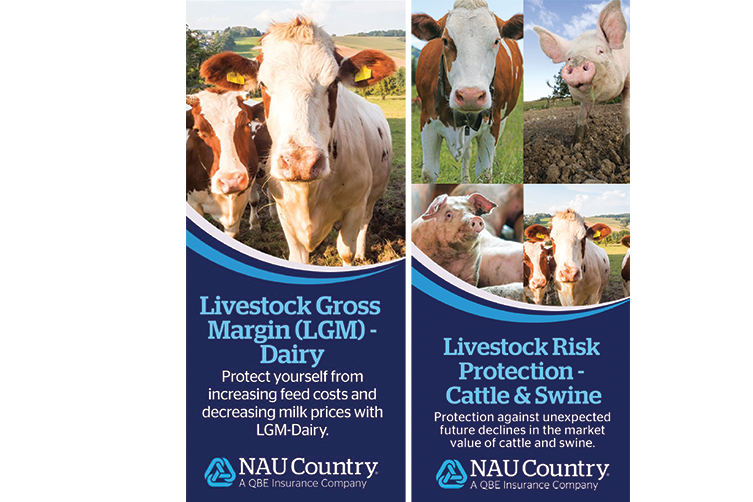Understanding Livestock Danger Protection (LRP) Insurance Coverage: A Comprehensive Guide
Navigating the realm of animals risk security (LRP) insurance coverage can be a complex undertaking for lots of in the farming market. From just how LRP insurance coverage functions to the different insurance coverage options offered, there is much to reveal in this detailed guide that can potentially shape the way animals manufacturers come close to danger monitoring in their businesses.

Exactly How LRP Insurance Functions
Periodically, comprehending the technicians of Animals Threat Protection (LRP) insurance coverage can be complicated, yet breaking down just how it functions can give quality for herdsmans and farmers. LRP insurance coverage is a danger monitoring tool designed to secure animals producers versus unforeseen price decreases. It's vital to keep in mind that LRP insurance is not an earnings assurance; instead, it focuses only on cost risk protection.
Eligibility and Insurance Coverage Options

When it comes to coverage choices, LRP insurance offers producers the adaptability to choose the insurance coverage level, protection period, and endorsements that best match their threat monitoring demands. By understanding the qualification criteria and insurance coverage alternatives readily available, animals manufacturers can make informed choices to manage threat properly.
Benefits And Drawbacks of LRP Insurance
When evaluating Animals Risk Defense (LRP) insurance, it is essential for livestock manufacturers to evaluate the advantages and drawbacks intrinsic in this threat monitoring tool.

One of the key benefits of LRP insurance is its capacity to offer security versus a decrease in animals costs. This can help protect producers from monetary losses resulting from market variations. In addition, LRP insurance policy offers a level of versatility, enabling producers to customize protection degrees and plan durations to suit their specific requirements. By locking in a guaranteed rate for their animals, manufacturers can much better take care of threat and plan for the future.
Nonetheless, there are additionally some downsides to think about. One limitation of LRP insurance coverage is that it does not secure against all kinds of threats, such as condition outbreaks or natural calamities. Costs can occasionally be pricey, particularly for producers with big livestock herds. It is crucial for producers to meticulously analyze their private danger direct exposure and monetary situation to establish if LRP insurance coverage is the best threat management device for their procedure.
Recognizing LRP Insurance Coverage Premiums

Tips for Making The Most Of LRP Benefits
Optimizing the benefits of Livestock Danger Protection (LRP) insurance policy needs calculated preparation and proactive threat administration - Bagley Risk Management. To make see this website the most of your LRP coverage, consider the adhering to pointers:
Routinely Analyze Market Problems: Stay informed about market trends and rate variations see it here in the animals sector. By checking these aspects, you can make educated choices regarding when to buy LRP insurance coverage to shield against potential losses.
Set Realistic Insurance Coverage Levels: When selecting protection degrees, consider your manufacturing expenses, market price of livestock, and prospective threats - Bagley Risk Management. Setting sensible coverage levels makes certain that you are adequately safeguarded without overpaying for unneeded insurance
Diversify Your Protection: Instead of depending entirely on LRP insurance policy, consider diversifying your risk management techniques. Integrating LRP with various other risk management devices such as futures contracts or alternatives can offer detailed coverage against market uncertainties.
Review and Readjust Insurance Coverage Routinely: As market problems alter, periodically examine your LRP protection to ensure it aligns with your existing danger direct exposure. Changing protection levels and timing of purchases can assist maximize your danger protection method. By following these ideas, you can make the most of the benefits of LRP insurance policy and safeguard your livestock operation versus unexpected threats.
Verdict
To conclude, animals risk security (LRP) insurance policy is a valuable device for farmers to take care of the monetary risks connected with their animals procedures. By understanding exactly how LRP functions, eligibility and protection alternatives, along with the pros and cons of this insurance policy, farmers can make educated decisions to shield their livelihoods. By thoroughly considering LRP premiums and carrying out strategies to take full advantage of benefits, farmers can reduce potential losses and make sure the sustainability of their procedures.
Animals producers interested in obtaining Livestock Threat Defense (LRP) insurance coverage can explore a range of eligibility criteria and insurance coverage alternatives customized to their particular livestock operations.When it comes to coverage options, LRP insurance coverage offers manufacturers the versatility to select the coverage level, coverage period, and recommendations that ideal match their danger administration requirements.To comprehend the intricacies of Animals Risk Security (LRP) insurance policy fully, comprehending the factors affecting LRP insurance policy premiums More Info is essential. LRP insurance costs are established by various elements, including the protection level picked, the expected price of livestock at the end of the coverage period, the kind of livestock being guaranteed, and the length of the coverage period.Evaluation and Readjust Protection Regularly: As market problems change, regularly review your LRP insurance coverage to ensure it lines up with your present threat direct exposure.